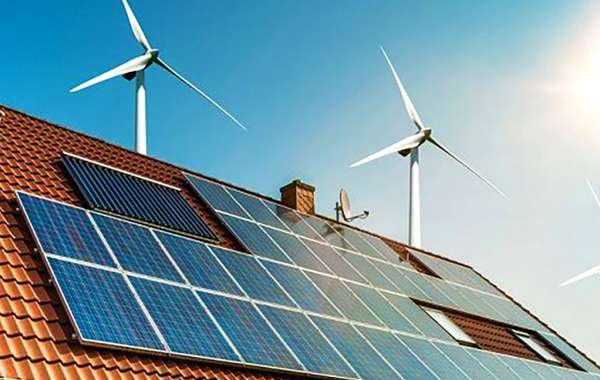Which is the best home EV charger? That depends...
Here's a suprising fact for many new EV owners - the charger for a shiny new Electric Vehicle is actually inside it! The charger is not the box on the wall, but is the equipment installed inside the car that takes the AC Alternating Current electric sourced from your regular house electric system, and converts it to DC Direct Current so your EV car’s battery pack can be charged.
The reality is that nearly everyone calls the wall-mounted box that supplies 240 volts of electricity for electric vehicles 'the charger'. That box, cord, and plug have a technical name - Electric Vehicle Service Equipment or EVSE.
If you have an EV and are planning to install a home charger, read this guide to find out about electric vehicle charging, and where to charge EVs in public places.
To be clear, it’s a bit misleading to say we’re providing guidance about how to choose EV chargers because we’re really talking about is choosing and buying the best EVSE - which is essential for safely connecting an electric car to a 240-volt source of electricity.
And to be crystal clear - what became obvious as we researched this article is that electric vehicle charging station can be known by multiple names which leads to confusion, so whether you read about an EV charging station, electric recharging point, charging point, charge point, ECS (electronic charging station), or EVSE (electric vehicle supply equipment), it’s all the same thing. Our advice? Don’t scratch a hole in your head trying to find out the difference between those because there is none - apart from the terminology.
That said, there are important differences between the various EV home chargers (uh, we mean EVSEs) which we will explain below.
EV charging stations fall into 3 main categories:
EVSEs are classified into three main groups for charging Electrical Vehicles:
- Residential EV charging stations
- Public parking EV chargers
- Fast-charging public EV charging stations.
Residential charging stations obviously refer to your home EVSE, whether that is a Level 1 or Level 2 charger. Most homes already have a level 1 ‘EV charging station’ in the form of a standard 110-volt outlet on the outside wall of a house, so you should be able to use your electric car without any home modifications, but trickle charging an EV like that can take up to 48 hours to complete a full charge, so depending your needs you may wish to install a level 2 home EV charging station.
Public charging stations are becoming increasingly accessible as electric cars become more common, and they are sometimes offered at a cost and sometimes free (yeah, you get lucky in some cities and locations). These will likely be slower than the high-speed EV chargers but still faster than plugging into a 110-volt outlet in your home.
Fast-charging public charging stations are often found at rest stops along major highways and interstates, allowing EVs to make longer distance trips. The fastest EV charging stations are provided by Tesla (Tesla Superchargers), and as you would expect they don’t accommodate other makes.
Tesla showed a lot of market foresight and built a network of charging stations long before there was demand, so in most areas, Tesla drivers currently enjoy quick and easy access to chargers without waiting.
Note: not to make a brand promotion, but due to the amount of high-speed charging stations and the significantly greater range of Teslas compared to many other EV models, at this point this makes Tesla potentially the best option for long distance road trips without detours for charging or long charging delays.
How much does it cost to charge an EV?
The cost to drive an EV compared to gas cars is, in a word, cheaper. And in two words, way cheaper. Even in regions with extremely high electricity rates or peak rates, you'll still pay less to drive an electric car than a gas-powered car.
If you charge mostly at home you will save more charging during off peak hours of course if you live in an area of fluctuating rates, but to give you an idea of a 'refueling' cost at a roadside EV charging station, below is the price for a tank of electricity, good luck finding a gas car you can fill for four bucks!

Choosing the best EV charging station
The easiest way to understand the output of an EV charger is to choose one based on ‘kilometers per hour’, that meets your personal needs. Meaning, how many kilometers of range you will get from a one-hour charge. For reference sake, a 110-volt wall plug will charge at a rate of about 7 Km per hour, while a roadside Tesla charging station will offer about 600 Km per hour.
A 220-volt outlet (like a dryer or stove plug) would give you about 35-40 km per hour, and the next big step-up would charge at a rate of about 80 km per hour. So the first step is choosing a charging rate that best suits you.
Level 1 EV chargers: Between 0 and 1.9 kW, this is the slowest charge, like your standard 110-volt wall plug.
Level 2 EV chargers: Range between 3.7 kW and 11 kW (16 A per phase). This is the standard 240-volt plug like for a dryer or a kitchen stove. They offer a quicker charge time and several wiring options (1 phase or 3 phase). They often also have the option of being connected to either a 20 amp or a 40 amp breaker.
How long are EV charging cords?
All vehicles can connect to 240-volt outlets using standard plugs, but cords will vary in length from one model to another. Be sure that the cord of any charger you purchase will be able to reach your car’s charging port. The cost of cable such as this is fairly pricey, so you will find that 15-foot cables are more common among the less-costly models. If that length isn’t sufficient, look for one with a 25-foot cord.
Another feature to consider is the ease with which the cord can be wound or spooled to keep it out of the way and protect it from damage when not it use.
As mentioned, home EV chargers are officially called Electric Vehicle Service Equipment (EVSE), and despite the common terminology of calling the unit attached to the wall the ‘the EV charger’, that’s not truly accurate. Technically speaking, the actual EV charger that converts AC house current into DC electricity is built into the vehicle itself. The role of the EVSE is to provide a safe supply of electricity to your vehicle.
Portable and all-weather EV chargers:
You have an option between: hard-wired and permanently-mounted chargers, or portable units that can plug into a 240-volt receptacle on an exterior wall. Though a little less ‘clean’ looking and convenient at home, there are two advantages to portable EV chargers to consider – you don’t need to pay an electrician to hook it up, and you can take it wherever you go.
Not all EVSEs are weather-proof, so before you choose a model, determine where it will be located, be it in your garage, or outside and exposed to weather. If you’ll be charging an EV outdoors and exposed to the weather, you’ll likely need to purchase a specific unit for that purpose and have it professionally hard-wired to meet local building codes.
Low-cost EV charging at home:
Even in areas with higher electricity rates, the cost of charging an electric car is still much more affordable than the cost of fuel a gas-powered car. And if you live in an area with variable power rates, you can still keep your costs down without much effort by charging at times during the day when electrical rates are low. Some smart chargers are able to be programed to only charge at off-peak hours to keep your EV fueling costs down.
EVSE charger power, what's the best choice?
Experts in the field suggest choosing an ESVE with at least 30 amps of power, and connecting it to a circuit breaker that can handle at least 40 amps.
Some EVs can be charged with fewer amps, but if you purchase a higher amp model now, you may save yourself a replacement charge in the future if you change cars. Lower-priced level 2 chargers deliver as little as 15 amps, this will save you a bit of money in the upfront but it limits your charging ability and takes more time.
What do EVSE home chargers cost?
Of course they will vary in price depending on speed, cable length, programmability, Wi-Fi connectivity and warranty, but be prepared to spend in the area of $500 to $700 USD ($600-1000 CAD), and that is before the cost of installation by an electrician.
Incentives and rebates for EV home chargers
Depending on where you live, you may be eligible for provincial or state incentives and rebates for installing home EV chargers or EVSE's. There is no consistency in tax rebates and incentives from state to state or province to province, and they are subject to change quickly based on the whims of politicians, so any list we compile would likely be out of date before we could publish it but we highly recommend contacting your provincial or state government to see what programs are currently in place for rebates for EVSEs and EV chargers where you live or do a search by clicking here if in the USA and for EVSE or EV charger rebates & incentives in Canada, click here.
Now you know more about EV home charging stations, find more info pages about Solar PV & resilient green building in the Ecohome Green Building Guide and these pages below :
Sign up now and reap the benefits of a free Ecohome Network Membership! |





































Comments (0)
Sign Up to Comment